Recently, poultry farmers are more and more interested in musky ducks (indole). Breeding, keeping, care at home of these birds have some features.
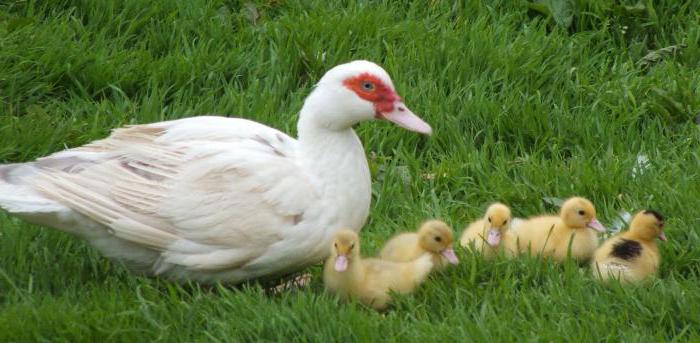
general information
What are indoctrots? Breeding, keeping, care at home is not so popular in our country. Musk ducks are different from other breeds, they can be attributed to the transitional type between geese and ducks.
Indowies are popular due to their lean meat, good egg production and unpretentiousness in the content. They behave non-aggressively towards other birds and do not make loud noises. Musk ducks do not quack, but hiss, making it convenient to keep them near the house.
The following features are characteristic of indolects:
- lean meat;
- hard plumage;
- a simple diet mainly from greens;
- ability to fly and instinct for flights;
- strong parental instinct.
A distinctive feature of musky ducks is coral growths at the base of the beak, resembling a lump. By the color of the plumage, ducks can be black and white, brown or white.
Why breed indyotok
How can indonesia be useful? Breeding, keeping, care at home are interesting for beginner poultry farmers and those who want to build their business in the field of agriculture.
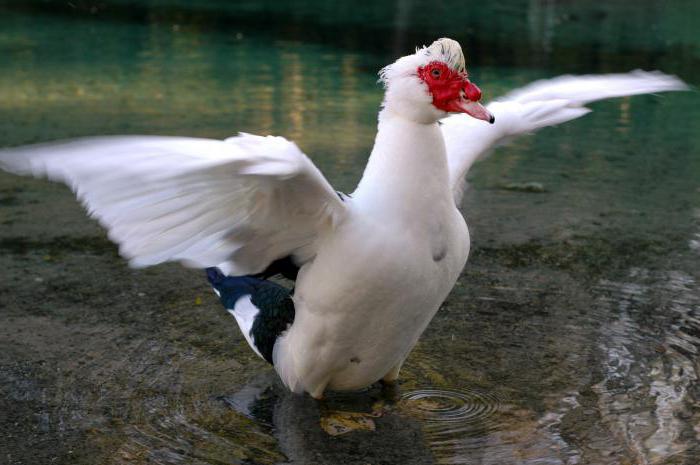
Indochka, mute swan, musky duck are the names of one species of bird. Their initial name is musky, due to the characteristic smell. Indoor birds are called because of the growth over the beak, similar to the growth of a turkey. Shipunami - due to the sounds made.
Ducks are bred for meat and eggs. Possible sale of chickens. Let's consider these aspects in more detail.
Meat and eggs
Indoor breeding at home is suitable for domestic poultry farming. They relate primarily to the meat industry and can give a good meat yield compared to other breeds. Musk ducks grow quickly with good feeding. The meat is lean, tender.
Shipunov is considered promising for doing business. With good care, the ducklings are able to gain the minimum slaughter weight by the thirteenth week, and the best for sale - by the twentieth. Young animals are not kept for sale for more than 24 weeks, as the bird begins to eat fat. Duck eggs are also used for sale.
A musky duck can carry 80-110 eggs with an average weight of 70 g per year. Birds lay eggs only twice a year, in autumn and spring, for several months.
Due to the seasonality, it is not possible to sell duck eggs all year round. But still, you can earn on eggs. Musk ducks at the beginning of masonry are very productive, ducklings hatchability is high, more than 90%. This is a good hatching egg that is expensive.
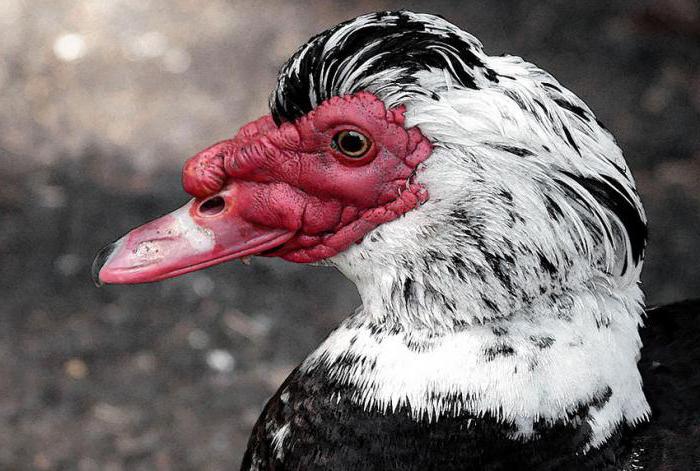
One drake should account for 3-5 ducks. If there are more, then the proportion of fertilized eggs will decrease. If less, then it will be difficult for females due to frequent harassment.
Males are much larger than females, their weight is 5-6 kg versus 3 kg in females. There are times when drakes injure ducks. Indoor breeding at home and for sale will be better if you maintain the recommended ratio of 1 drake for 3-5 females.
Ducklings for sale
Musk ducks are good hens, so selling ducklings is also beneficial. You need to know that the hatching of a musky duck begins only after a significant number of eggs, 15-20 pieces, accumulate in the nest. Hatching lasts 30-35 days. The first hatching ducklings must be taken immediately from the nest, otherwise the duck will not survive the remaining eggs.It is better to grow babies on their own, as the mute swan is quite dispersed and may simply lose part of the ducklings.
You should be aware of a few more features of eggs indoutka. Breeding at home in an incubator is not as effective as incubation by the mother. Also, regardless of the method of hatching in the clutch, more than 60% of the chicks will be drakes. This is a good trend in the case of breeding ducks for meat, as they are larger.

Benefits
Indoor breeding at home for beginners is suitable, since these birds are unpretentious. Mute swan are hardy, resistant to bird diseases and can do without a pond. Indoor women are not aggressive towards other birds, keep out in the yard, do not provoke fights.
Musk ducks grow quickly, reach readiness early. In terms of dietary and gustatory qualities, the meat of an indochka is superior to chicken. It is gentle, soft, suitable for diet food.
Musk ducks are almost omnivorous. They eat greens food waste, earthworms and other insects. Mortality in indolets is low, even among young animals. Birds are resistant to various diseases. Mute swarms become 180-210 days old.
Premises, equipment and inventory
What is required for birds like indochka? Breeding, keeping, care at home will require some financial costs. In countries with a warm climate or summer in a temperate climate, birds can live on free-range. In cold weather, they must be placed in a house at least 1.8 meters high. Windows are located at a height of a meter, their total area should be 10% of the floor area. For each meter of ducklings there should be 2-3 individuals, not more.
Artificial lighting of 5 W per 1 sq. m. The walls need to be whitewashed. The floor can be with bedding, mesh or combined. The thickness of the rods of the mesh is at least 3 mm, it must be positioned at a height of 25-30 cm from the floor. Laz for ducks at a height of 5-8 cm from the floor, 40x40cm.
The temperature in the caddy should not fall below zero. During the laying period, the optimum temperature is 18-20 degrees. Indoor women are afraid of damp, so good ventilation is needed. A duck perch needs a wide one, in the form of a bench 15-20 cm wide at a height of 15-20 cm from the floor.
The feeders should be positioned so that the entire livestock can feed at the same time. The height of the feeder is 10 cm, the width is 25 cm, the length is at least 5 cm per head. Drinking bowls are recommended to use trough-like, but small, so that the birds do not use them for swimming, especially in winter.
In a darkened place, place the nests from plywood 40x50x50cm with a nut not higher than 10 cm. The bottom of the nest can be covered with wood shavings or straw, sawdust will not work. For every 2-3 ducks there is one nest.
On walking ducks released in the afternoon. A walking yard is enclosed by a fence of at least two meters. If the fence is smaller, then the wings are cut to the birds. Bathing capacity should be at least 15 liters. Indoor women do not need a large open pond, you can limit yourself to a small pond or groove.
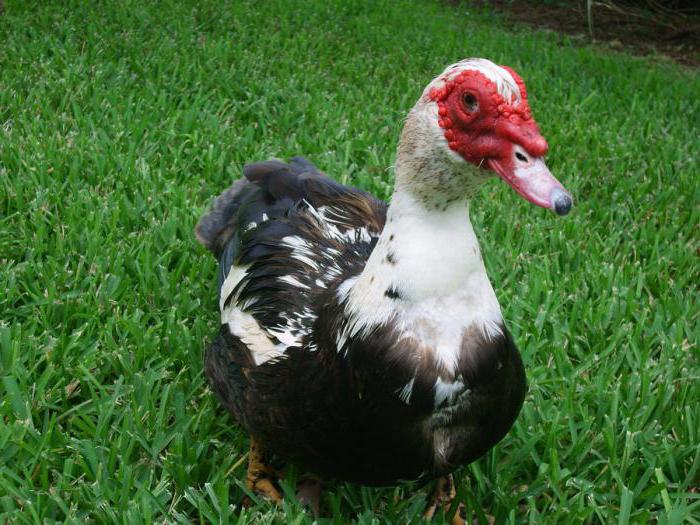
Feeding basics
Breeding and keeping indolets at home is considered uncomplicated, including due to the omnivorous birds. But do not forget that in order for the ducks to gain weight and rush well, their nutrition must be balanced. Birds must receive mineral feed.
If you are carried away by indochka, breeding, keeping, caring, feeding at home, then you should understand that these birds need constant access to water. At the same time, keep in mind that you can’t swim in the winter, but each duck can drink a liter of water per day. We need to think about what the drinker will be.
You need to feed three times a day. At least 10% of the feed should be greens. Indoor women are herbivores and grass must be given constantly. There are two well-established methods for feeding indolets.
The first is feed with the addition of vitamins.The choice of food must be approached responsibly, as it must fully satisfy all the needs of the bird in nutrients, vitamins and trace elements.
The second way is cereal nutrition with the addition of nutritional components. Cereals are combined with dry premixes, calcium, vegetable protein (peas, lupins). The grain mixture itself must be diverse in composition. The required minimum is oats, barley, wheat and corn.
Indians need fish, meat and bone meal or dairy products, fish and meat wastes. Premixes are necessary in the absence of complete feed. They improve growth, egg production, increase muscle mass. They can be either universal or specialized, suitable for the specific species and age of the bird.
Fat-soluble or water-soluble vitamins must be added to the feed. In young, sick and weakened birds, the need for vitamins is higher. When exposed to stress factors, the need for vitamins increases by 2-4 times.
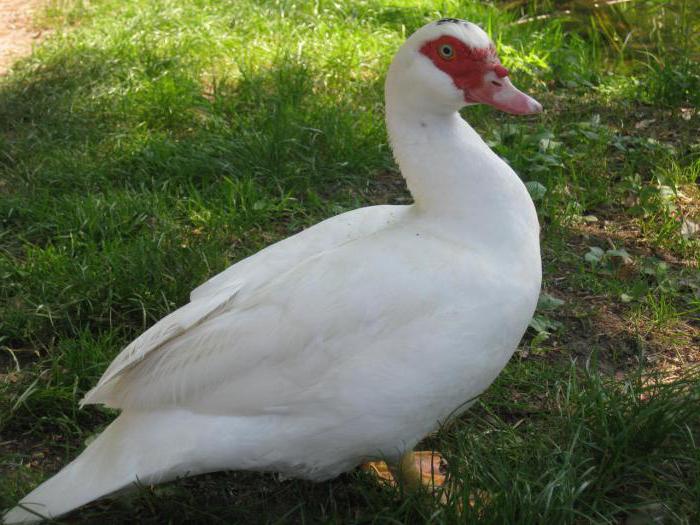
Family formation
It is more profitable to grow several indigenous families at once. 3-5 females and a male of the same age or older by 1.5 months (from the previous batch). In order to exclude closely related crosses, drakes should be periodically changed to birds from another farm.
A family is formed from spring ducklings when males reach 20 weeks of age. Before that, they are kept separately. Shipunov can be crossed with other species of ducks, but such offspring will be fruitless.
The sexual instinct in ducks is seasonal, therefore, in spring, the fertilization of eggs is much higher than in late summer. Oviposition begins at the end of March, an earlier start can be caused by increasing daylight hours using artificial lighting. During the year from each female you can get 100 eggs weighing 70 g.
Breeding ducklings
The eggs intended for incubation are removed daily from the nest and stored indoors at a temperature of 15 degrees. On each you need to affix the date of removal. To maintain moisture near the eggs put a container of water. They need to be stored for 15-18 days, then they will acquire optimal incubation properties.
The female nests when 15-20 eggs are laid. After 2-3 days, another 20 eggs from other ducks can be placed under the brood hen. During the season, you can get 2-3 broods of 20 ducklings in each from a brood hen.
If several ducks are sitting on the nest, then they need to be divided by partitions. Alien ducklings are not allowed to the mother hen, otherwise she will come down from the nest. Chicks leave the nest after 33-35 days of hatching. For 30 minutes they are left with their mother, after which they are carried away under a lamp. After all the chicks hatch and dry, they can be returned to the mother or continue growing without her.
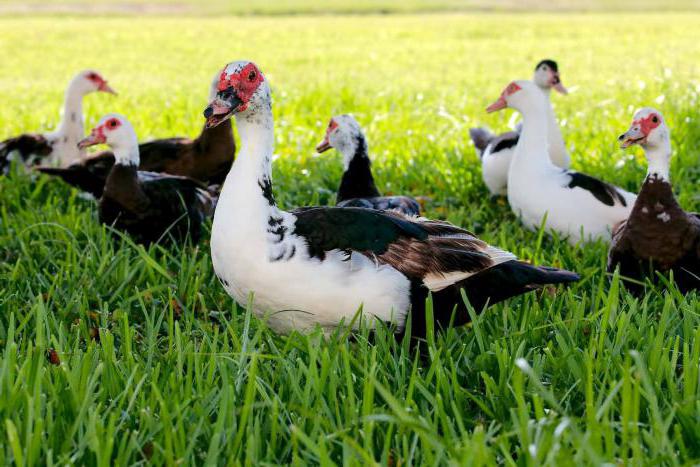
Growing ducklings
How fast do indoctrots grow? Breeding and keeping musk ducks at home has its own characteristics. Healthy ducklings weigh 50-70 gr. They stand well, the fluff is yellow, shiny.
Breeding, keeping, caring for Indowians at home is simple, but young animals need to be monitored especially carefully. The first days of ducklings are kept in a cardboard box covered with large wood shavings or straw. They warm the kids with a lamp with a reflector.
At two weeks of age, the drakes are separated from the ducks and kept separate. This should be done due to the fact that males develop much faster and will suppress weak females.
The grown ducklings are grown on a deep litter or mesh floor. Planting density 5-6 goals per meter until the age of 26 weeks, 3-4 - after. On walking, ducklings are released upon reaching the age of 2 weeks. If the babies are brought up separately from their mother, then they can not be bathed until a month old.
In the early days, boiled egg, milk, bran, cottage cheese, herbs, crushed grain are used as food. Already on the fourth day you can give meat waste, on the tenth - boiled potatoes. In the first 5 days, vitamins are added to the water.
Sales and profit
Breeding and caring for domestic animals at home is possible not only for their own needs. On this you can build your business. To make a profit, you need to keep at least 100 goals, but it’s better to start with a smaller number to understand the intricacies of leaving.
Sales problems should not arise, as the meat of the indoor is tasty, dietary. You can establish sales in shops and catering outlets. Be sure to use the Internet to increase sales. Bird breeding needs to be planned so that the batch of birds is ready for slaughter every month. A small farm can make a profit of $ 250 per month.








